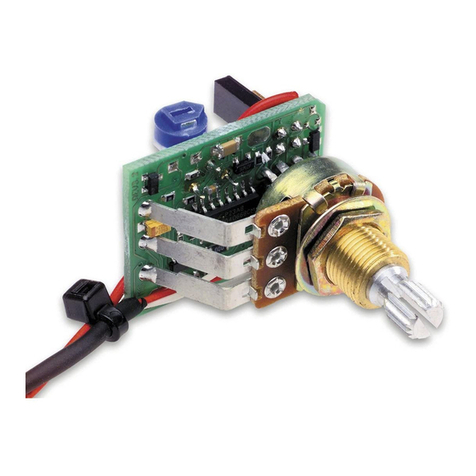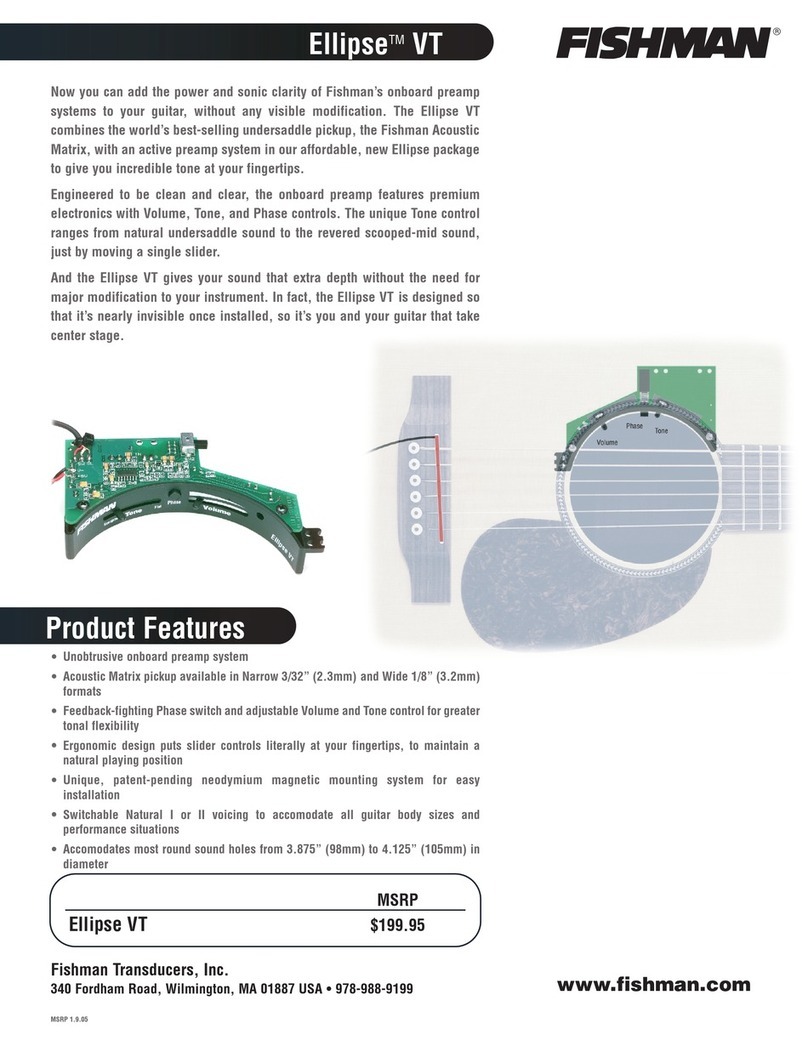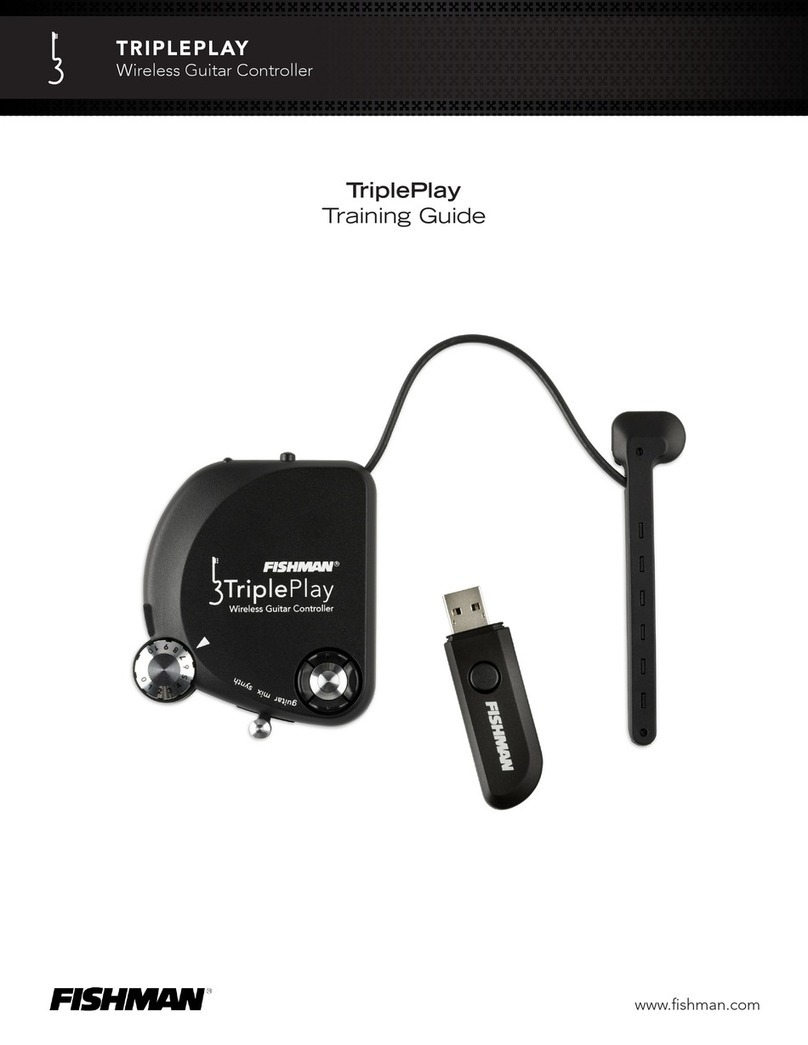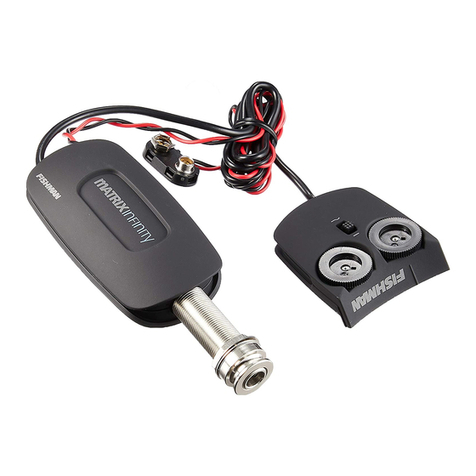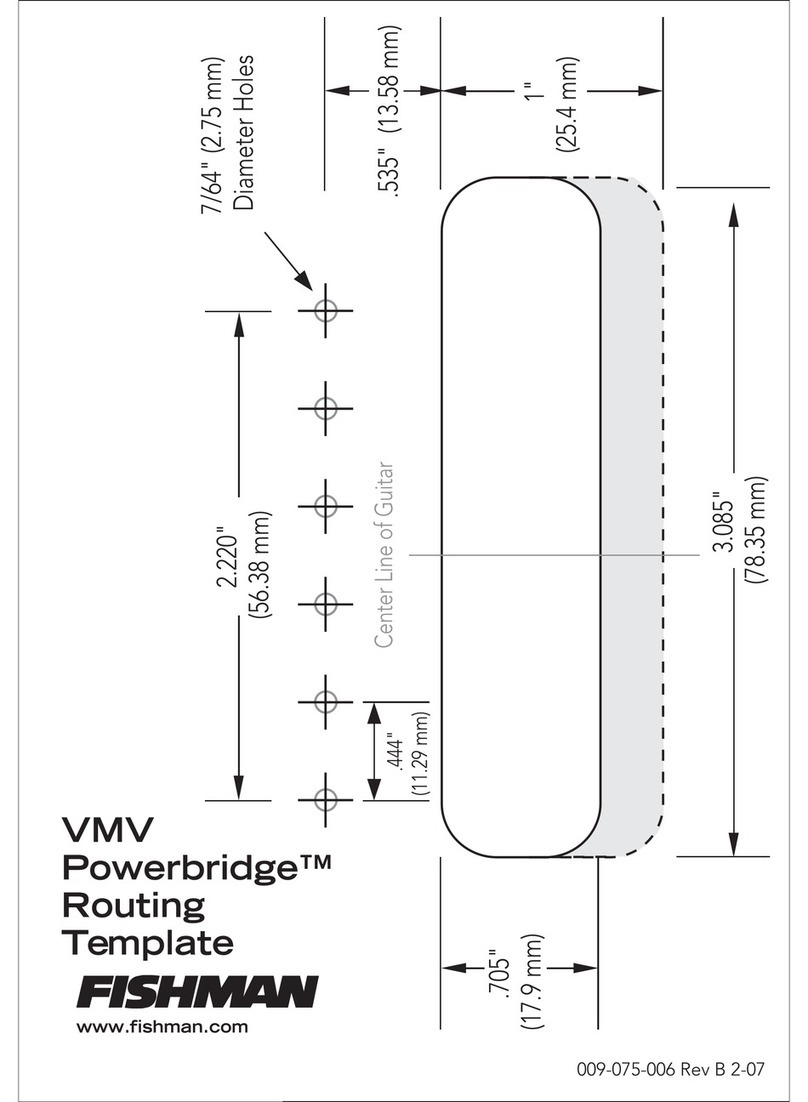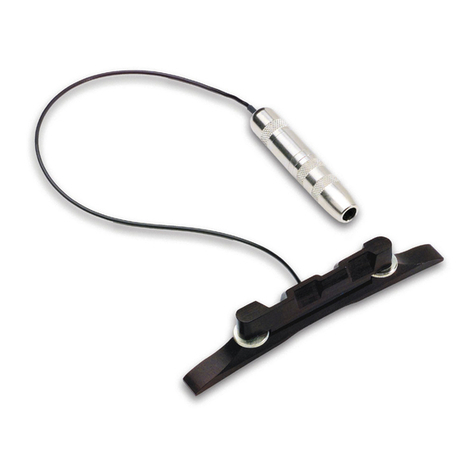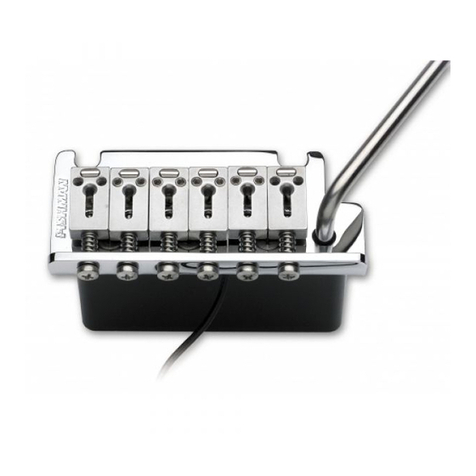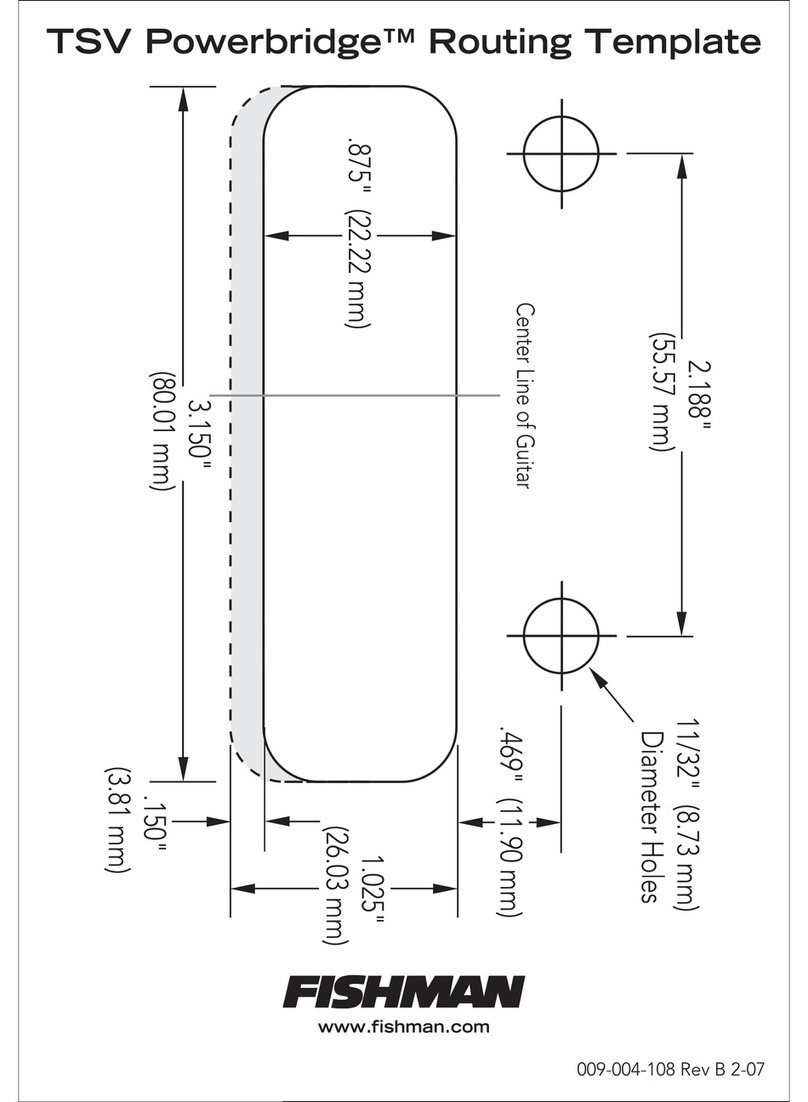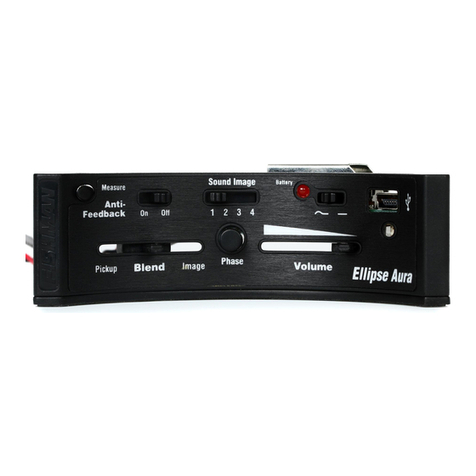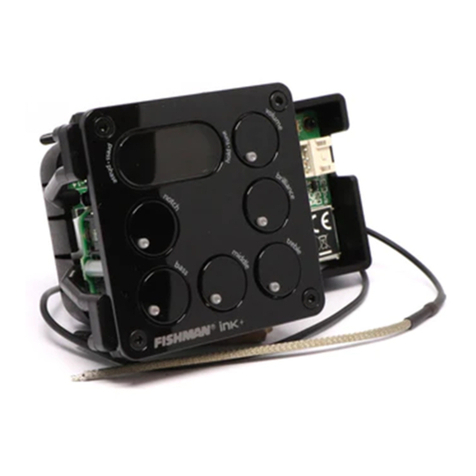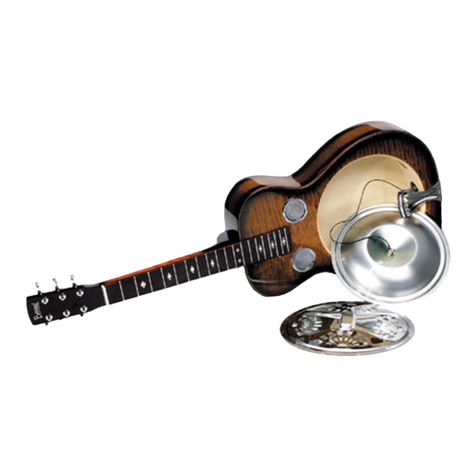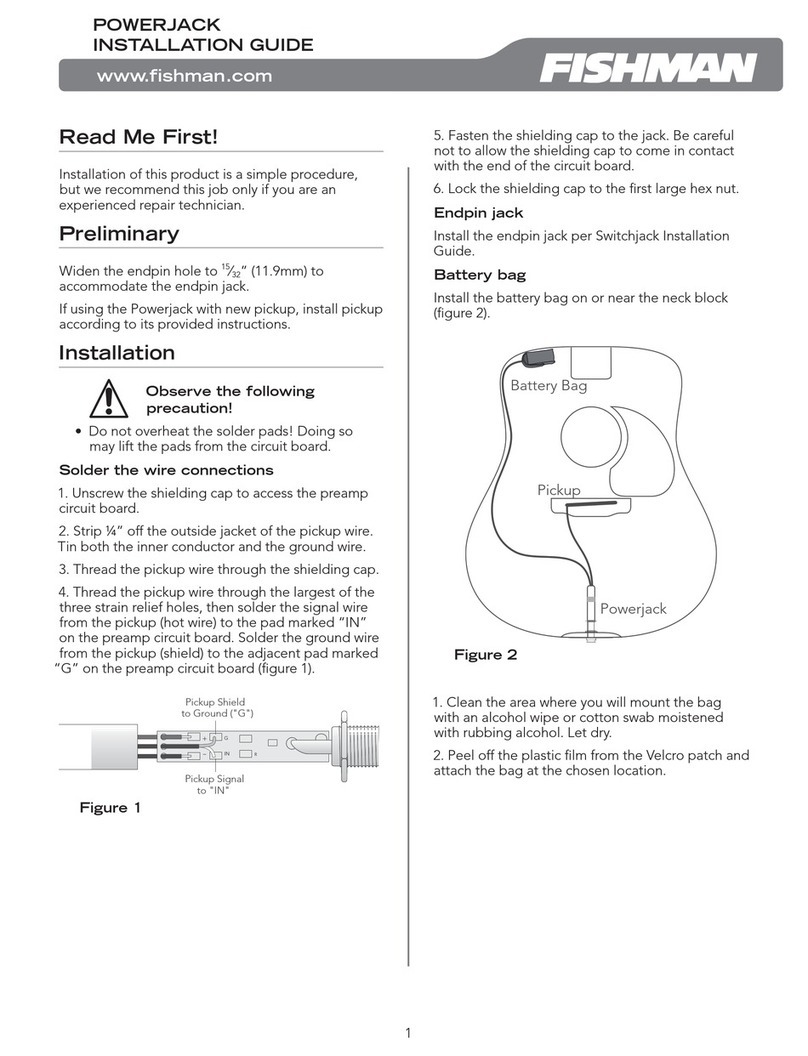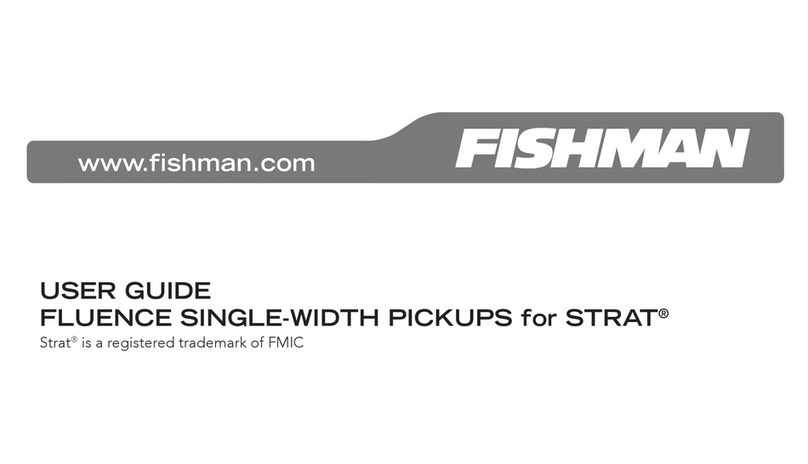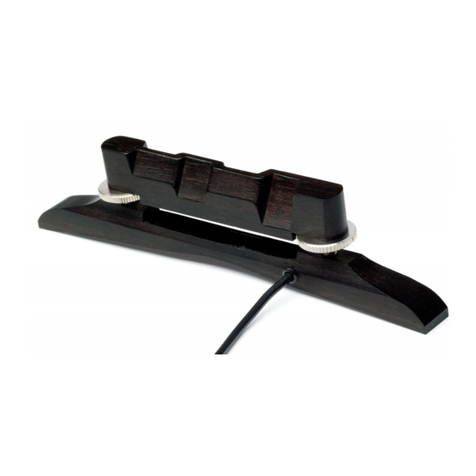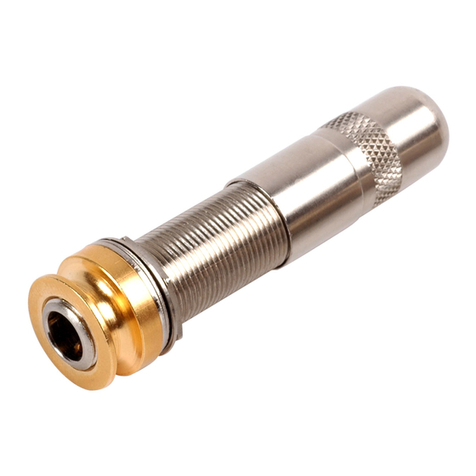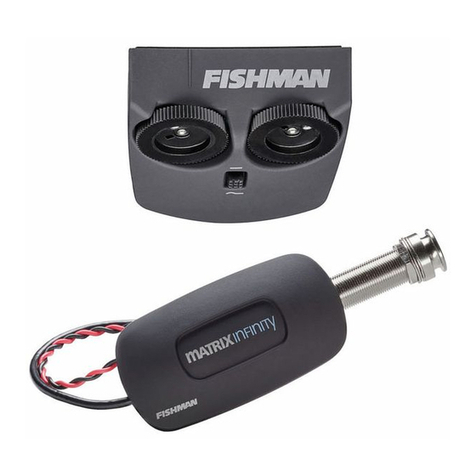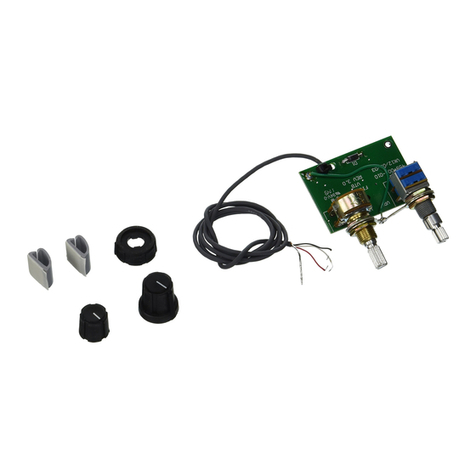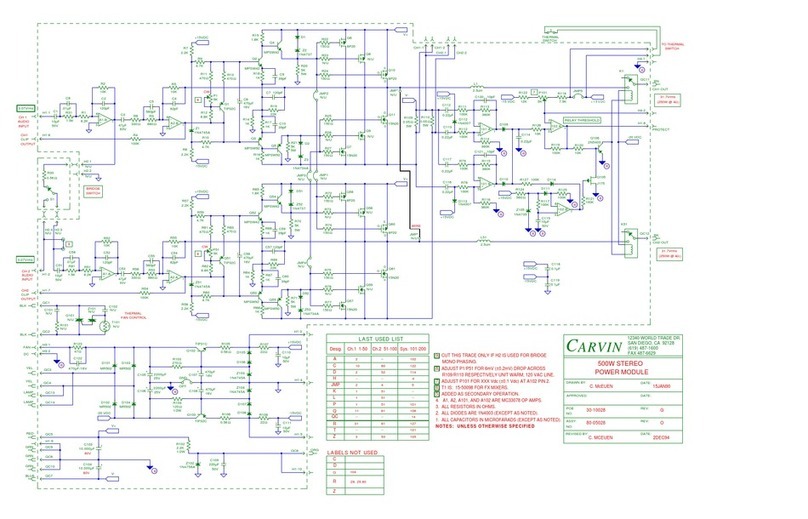
1
www.fishman.com
Read Me First!
Installation of this product is a simple procedure,
but we recommend this job only if you are an
experienced repair technician.
Requirements
The Full Circle is available in either ¼-20 or 6mm
thread format. Before you install the pickup,
confirm that the threads in the bridge will match
those on the Full Circle.
Installation
Observe the following
precautions!
• Before you install the Full Circle, confirm
that the wheels you are about to replace are
lined up well in the legs. The wheels must
be parallel and the posts perpendicular to
the cuts in the legs or the Full Circle may
become mechanically unstable on the
instrument (figure 1).
• Fishman Transducers will not be responsible
for damages to the pickup or the instrument
due to improperly installed wheels!
Retro-fit the Full Circle to a bridge with
installed wheels
The pickup is “hot” on the flat face of the wheel:
on the side with the non-threaded post. For good
performance it is crucial that the hot side of the
pickup lies absolutely flat with no gaps or voids
where it contacts the bridge. If necessary, sand the
wood flat where it contacts the wheel before you
install bridge on the bass (figure 1).
When you install the pickup, remove the RCA plug
from the back side of the output jack. Replace the
plug after the pickup is in place.
Setup
Once the wheels are mounted and the bass is tuned
up, thread the white wire through one of the wing
holes in the bridge and hold it in place with one of
the neoprene plugs from the kit (figure 2).
Fasten the output jack behind the bridge and
between two adjacent pairs of strings. Then fasten
the RCA plug into the back of the output jack.
Mind the gap!
For good pickup performance, leave a slight gap
between the threaded side of the wheel and the
wood. If you close the gap, the amplified sound will
become choked and muted (figure 2).
Height adjustment
Remove the RCA plug from the back of the output
jack so the white wire does not wrap around the
leg as you turn the wheel. Turn both wheels equal
amounts for good contact with the pickup. To pro-
long the life of the pickup, do not pinch the white
wire where it joins the wheel.
Tonal adjustments (figure 3)
Turn the wheel so the wire is perpendicular to the
leg and the pickup will have an open, resonant
response.
Turn the wheel 45 degrees so the wire faces one of
the corners and the tone will be somewhat drier and
more focused, with less output.
Fit the Full Circle to a bridge without
wheels
For maximum reliability and performance, the
wheels should be centered precisely within the
taper of the bridge.
Fit the bridge to the bass before you install the
wheels. Note that the wheel with the white wire
belongs under the E string.
There is a subtle tonal difference between “threads
up” and “threads down” position for the pickup.
FULL CIRCLE
INSTALLATION GUIDE
Hot Side
Good Bad
Gap
Figure 1
Figure 2
